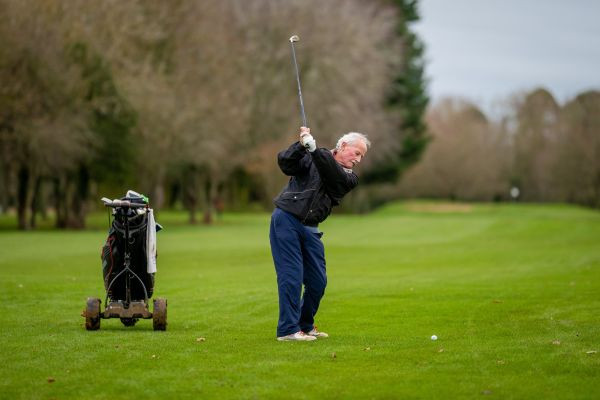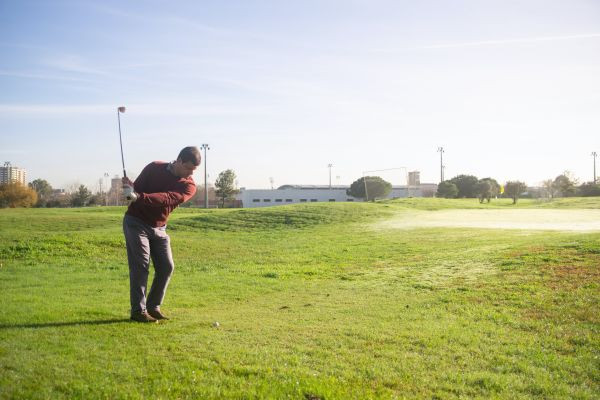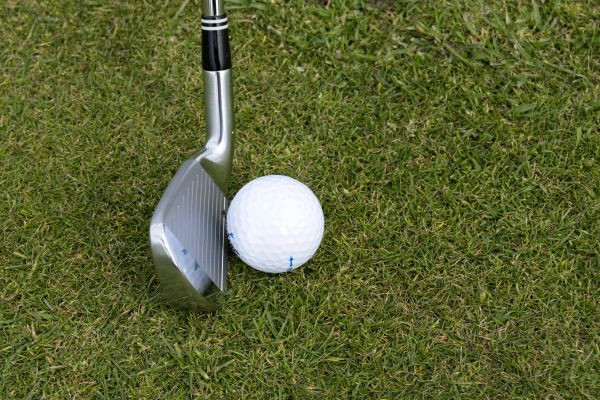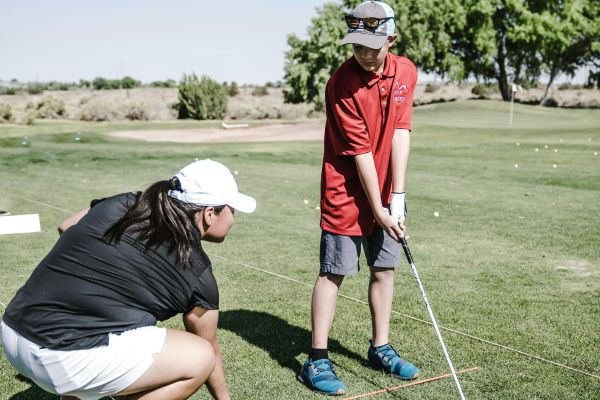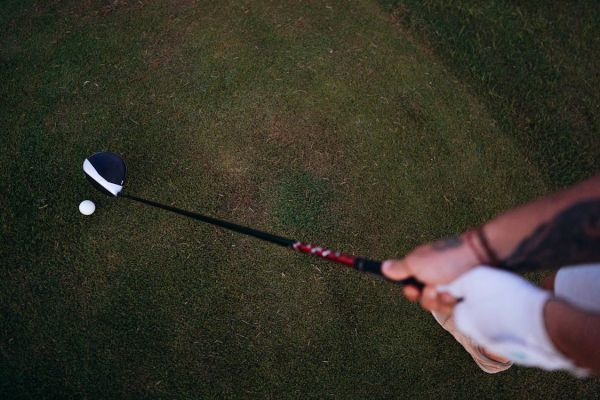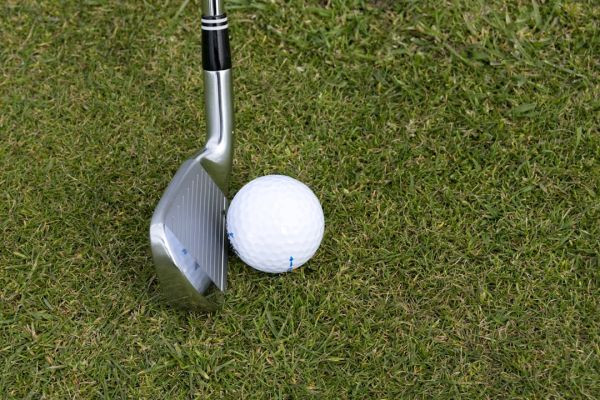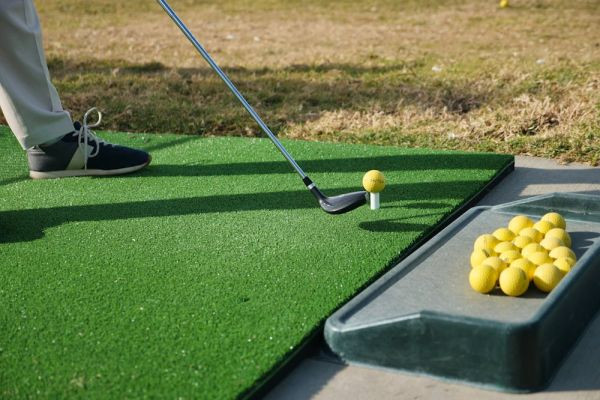Busting the Pendulum Putting Myth: The 36/64 Rule Explained
Ever since golf became a popular sport, experts have used the example of the pendulum as a foundation of instruction, creating an image of accuracy and simplicity in the minds of golfers. The idea, co..
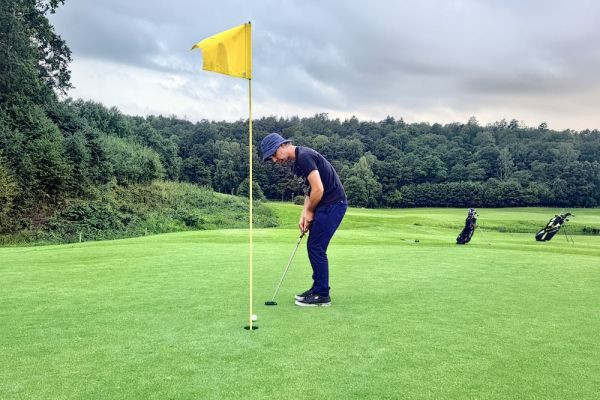
Ever since golf became a popular sport, experts have used the example of the pendulum as a foundation of instruction, creating an image of accuracy and simplicity in the minds of golfers. The idea, compared to the balanced and predictable swing of a grandfather clock, has been admired for its assumed effectiveness in guaranteeing a flawless and harmonious putting stroke. But if we remove the modern golf analytics layer by layer, it becomes clear that this traditional guideline may not be the benchmark that everyone thought it to be.
The arrival of the 35/64 Rule defies the status quo, providing a different outlook rooted in factual data and new analysis. This rule is a foundational switch and not just a slight modification to the traditional understanding that reconsiders our knowledge of what makes a putting stroke an effective one. By examining and analyzing the actions and styles of the best golfers, the 36/64 Rule comes out as a beacon of innovation, leading golfers towards a more successful and rationally certified perspective to putting.
Knowing the 36/64 Rule
What is the 36/64 Rule?
It’s an idea that describes the proportions of a putting stroke hinged on the actions of golfers. This rule, unlike the swing, proposes a stroke where the 36% of the entire movement is attributed to the backswing while 64% is allotted to the follow through. This unbalanced approach may appear unusual at the beginning. It’s this unevenness that develops the speed for accurate and harmonious putting.
The 36/64 Rule is significant for two reasons: moving away from traditional instructions and its dependence on factual data-propelled research. A definite pattern comes into view when studying players’ strokes; something that defies beliefs about putting methods and demonstrates a fresh effectiveness degree.
Evidence Supporting the 36/64 Rule
The credibility of the 36/64 Rule is largely based on the groundbreaking studies carried out by SAM PuttLab. Through technology that captures details of putting strokes SAM PuttLab has played a crucial role in unraveling the mechanics behind successful putters, in professional golf.
The analysis, which looked at golfers, shows a consistent pattern; most top players do not follow a 50/50 swing ratio. Instead their shots tend to favor a follow through reflecting the principles of the 36/64 Rule.
This discovery goes beyond numbers; it signifies an understanding of the nuances of golf. Data from SAM PuttLab not only supports the 36/64 Rule but also highlights the limitations of the pendulum model in capturing the complexities of an effective putting stroke. By examining and analyzing this data we challenge the myth of the pendulum stroke. Open up new possibilities for superior putting performance guided by insights from the 36/64 Rule.
Why the Pendulum Stroke Falls Short

Source:https://www.pexels.com/photo/man-wearing-a-polo-shirt-and-shorts-playing-golf-5043051/
Deceleration: The Hidden Culprit
The theory behind the stroke though simple and elegant masks a flaw that can hinder a golfer's performance on the putting green. This flaw is deceleration. In following the technique golfers are instructed to swing their putter in an arc covering equal distances, in both backswing and forward swing.
This idea may seem like it promotes a balanced approach. It actually paves the way for slowing down. A gradual decrease in the putter's speed as it nears the ball.
Slowing down is not a mistake; it's a significant blunder that can interfere with how well you putt. When the putter loses speed less energy is transferred to the ball impacting both its distance and direction. This loss of momentum can result in putts that don't make it to the hole or off target putts that stray from their intended path affecting both consistency and accuracy. The pendulum stroke, known for its tendency to slow down can thus hinder your efforts to achieve a successful putting technique.
Consistency Issues
Every golfer aims for a putting stroke in their training routine. The pendulum approach, which focuses on maintaining balance in your swing, seems like it could lead to consistency. However reality is more intricate than that. Striving for a distribution of effort, between the backswing and follow through overlooks a part of putting mechanics; acceleration.
The key to a putt lies in acceleration, which's the gradual increase in speed of the putter head as it moves through the stroke. This element is crucial for ensuring that the ball is struck with the force and direction to follow its intended path. When acceleration is overlooked the pendulum stroke fails to utilize the golfer's movement potential resulting in inconsistent putt outcomes such as varying distances and unpredictable ball paths.
The Science Behind Acceleration
Exploring the science behind acceleration in putting has been greatly enhanced by SAM PuttLabs research insights. Through its approach to studying putting strokes SAM PuttLab has shed light on the importance of acceleration in achieving an effective putting motion. Their research shows a departure from the pendulum model; professional golfers use deliberate and controlled acceleration to produce a more dynamic and efficient stroke.
This deliberate acceleration ensures that the putter head reaches a speed at impact with the ball enhancing both precision and power in putting. The contrast with the swing of a pendulum stroke is evident.
Then, moving in a manner that ensures effective strokes, those evaluated by SAM PuttLab demonstrate deliberate asymmetry and therefore emphasizing a more powerful and quicker completion. This method not only improves the accuracy of the putt but also enhances the golfers capacity to manage both distance and aim.
The golfing community has taken note of the insights revealed by SAM PuttLab. Instructors and experienced players are now shifting away from the approach opting instead for a putting stroke that emphasizes controlled acceleration leading to a strong follow through. The consensus is building around the idea that this technique's crucial for achieving precision and reliability on the greens.
These expert perspectives backed by data and practical knowledge advocate for a perspective on putting techniques. By focusing on acceleration golfers can hone their strokes to align with the models identified by SAM PuttLab. This change not only holds promise for enhancing performance but also signifies a broader shift in how putting is taught and practiced – towards methods supported by science and proven results on the field.
Implementing the 36/64 Rule in Your Game
Embracing the 36/64 Rule in your putting style involves more than changing how you physically putt; it requires adopting a mindset that prioritizes acceleration over symmetry.
In this part we'll explore ways to integrate this rule into your game from specific drills and techniques to utilizing the appropriate tools.
Drills and Techniques
Incorporating the 36/64 Rule into your putting routine necessitates focused practice and a dedication to reshaping your muscle memory. The objective is to develop a stroke where the backswing is intentionally shorter than the follow through highlighting acceleration through the ball. Here are a couple of exercises crafted to assist you in achieving this;
Drill for Acceleration Over Distance; Set up two tees on the practice green; one at your ball's location and another 6 inches behind it. Concentrate on halting your backswing at the tee then swiftly accelerating through the ball towards a follow through that extends well beyond the impact point. This drill reinforces the idea of a shorter backswing and an extended follow-through thereby embedding the 36/64 rhythm into your putting stroke.
Metronome Exercise; Utilize a metronome app or device to establish a beat that aligns with your putting rhythm. The aim is to commence your backswing at one beat and make contact with the ball on the beat followed by extending your follow through for two beats.
This exercise is great for honing your sense of timing to boost acceleration promoting a putting technique that adheres to the 36/64 Rule.
Tools to Help: The EyeLine Putting Rail
For golfers seeking a hands on approach to perfecting the 36/64 stroke the EyeLine Putting Rail is an asset. This training aid guides the putter along the intended swing path providing feedback on the length and acceleration of your stroke.
By maintaining contact between the putter and the rail throughout your swing you can distinguish between a traditional motion and the dynamic 36/64 movement. The EyeLine Putting Rail is particularly beneficial for learners. Those who respond well to physical feedback make it a popular choice among golfers dedicated to enhancing their putting accuracy.
Expert Tips for Improving Your Putting Stroke
In golf having a strong mental game is essential especially in putting. Visualizing the acceleration phase of your stroke can significantly improve your performance. Prior to each putt take a moment to visualize in detail how the club accelerates through impact following the 36/64 stroke ratio.
Engaging in visualization before executing a golf stroke can help tune your mind and body, boosting your confidence and consistency on the putting green.
Mastering the 36/64 Rule requires practice to develop muscle memory for this technique. Consistent practice routines are crucial for ingraining the backswing and follow through ratio. Include drills focusing on these aspects in your sessions to speed up your improvement in putting accuracy and reliability.
Conclusion
The traditional manner of pendulum putting is prevalent and being taught but many experiments and success stories have rendered the method substandard and less favorable compared to the 36/64 Rule. This way of putting is supported by top golf analytics and statements from professional and frequent golfers. Once a person learns and starts to follow the 36/64 Rule a significant improvement in their game can be expected. Putting would become their strength rather than a problem.
Frequently Asked Questions (FAQs)
What exactly is the 36/64 Rule in putting?
In the 36/64 Rule , the best putting stroke is one where the backswing time constitutes 36% of the whole stroke and the forward swing or follow-through time makes up 64% of the entire stroke. This distribution helps accelerate your stroke through the ball for more consistent and controlled putts.
How was the 36/64 Rule discovered?
Research involving an analysis of pro golfers' putting techniques with the help of cutting-edge technology like SAM PuttLab led to the discovery of the 36/64 Rule. Analysis showed that the better putters on the tour had different ratios for their backswing and follow-through compared to the traditional 50/50 pendulum stroke used by many amateurs. The better putters on the tour had a 44/56, 53/47 and 36/64 ratios.
Why is acceleration important in putting?
Increasing acceleration while putting ensures that the putter head moves at its optimal speed when it connects with the ball leading to a consistent roll and better distance control. When the putter head decelerates at impact it can lead to mishits, inconsistent distance and off-line putts.
Can amateur golfers benefit from the 36/64 Rule?
Yes, the 36/64 Rule is beneficial for amateur golfers. It is a putting approach that helps any golfer improve their consistency and success at putting.
How does one practice the 36/64 Rule?
Practicing the 36/64 Rule through drills that encourage a shorter backswing and a longer accelerated follow-through is essential. It is recommended to practice a drill each night for thirty days utilizing the EyeLine Putting Rail (or a similar drill tool) to master the rhythm of the 36/64 Rule.













